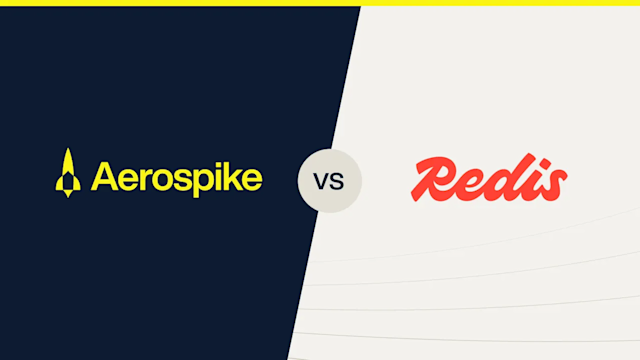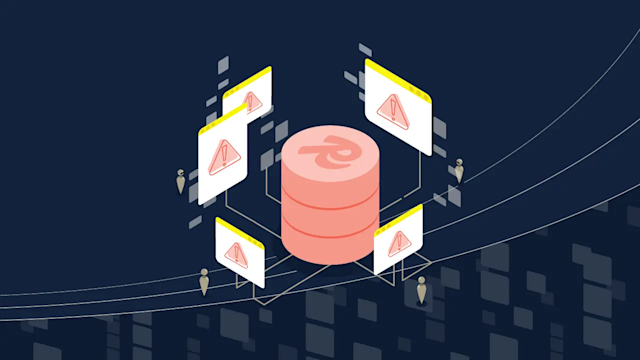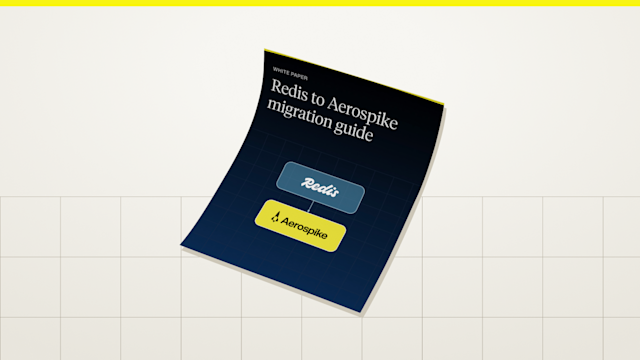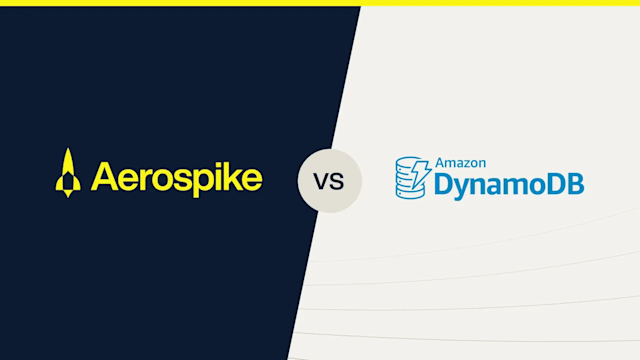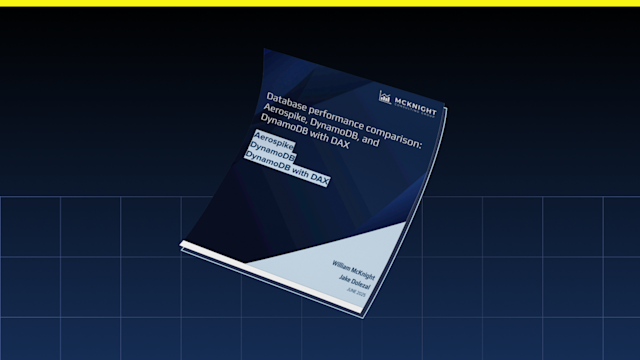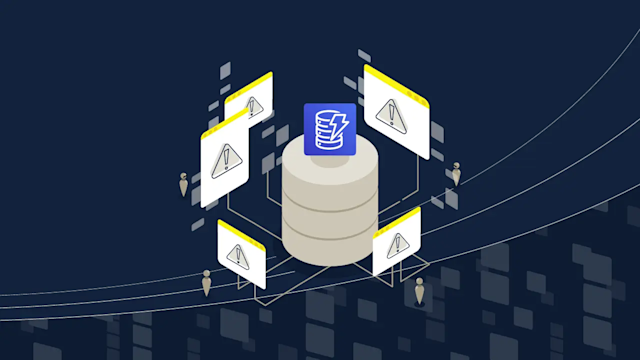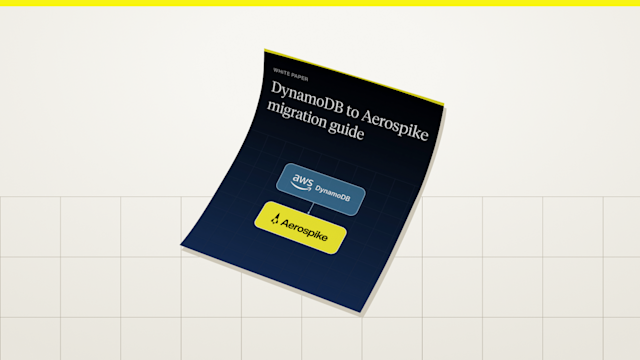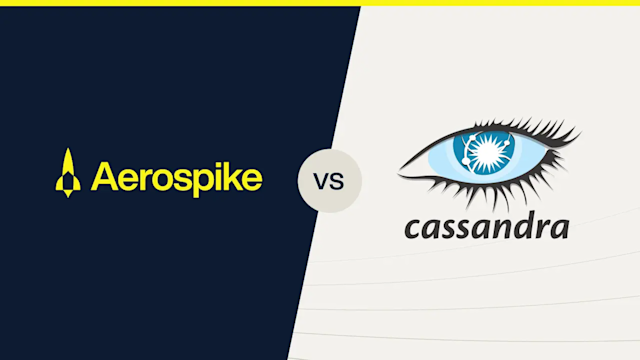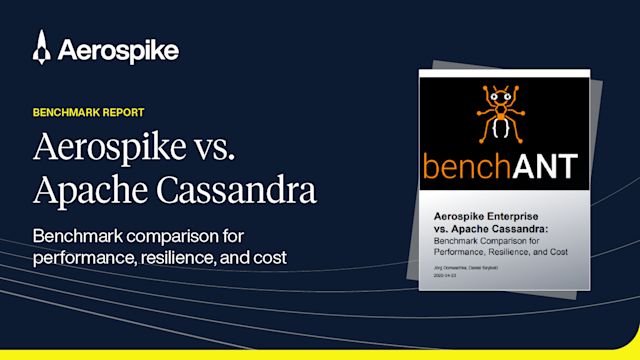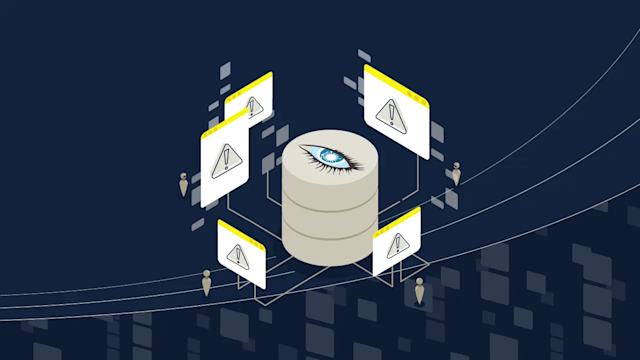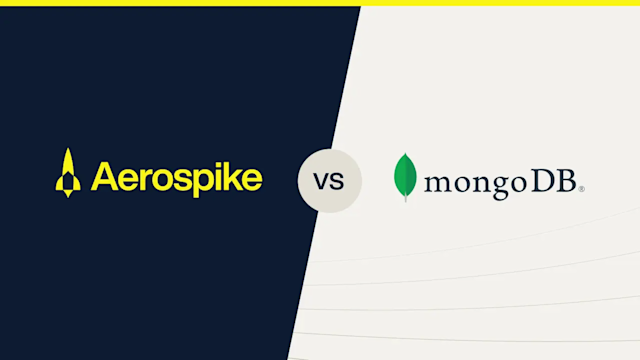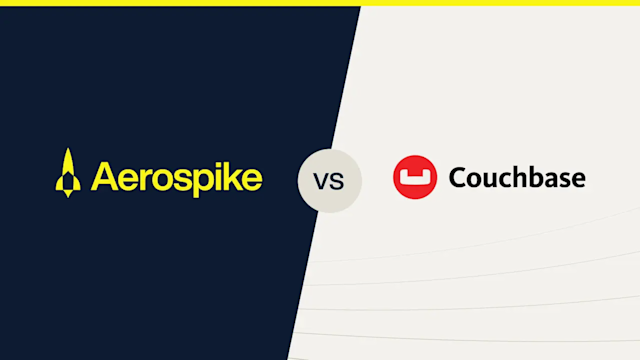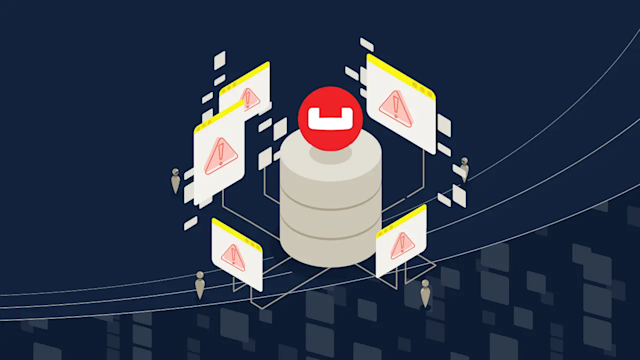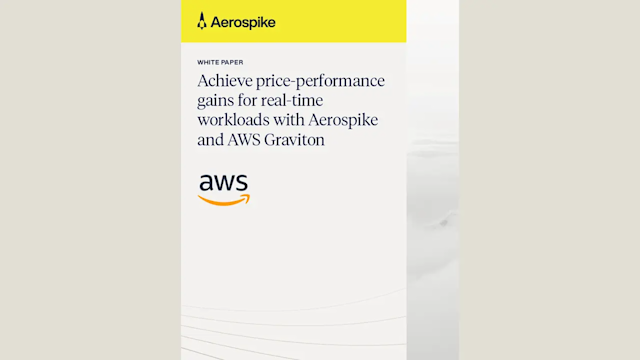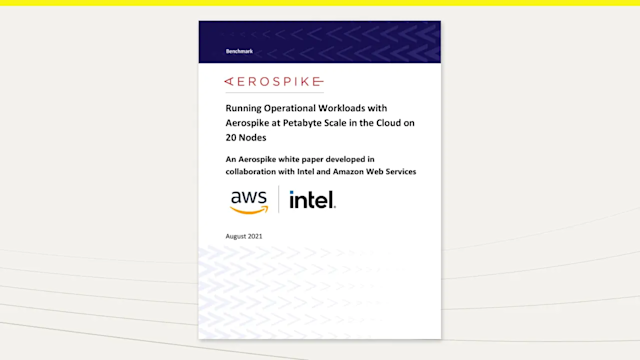Redis vs. Aerospike
As workloads grow, Redis users often face rising costs, scalability issues, and operational complexity. Aerospike offers a more efficient, scalable, low-latency alternative for high-demand applications.

DynamoDB vs. Aerospike
Aerospike outperforms DynamoDB by delivering low latency and high throughput with its patented Hybrid Memory Architecture, leveraging SSDs for near-DRAM performance at lower costs. Its strong consistency and scalability make it the ideal choice for real-time analytics and large-scale enterprise applications.

Cassandra vs. Aerospike
Aerospike offers significant cost efficiency, high uptime, and more predictable performance for real-time, mission-critical applications compared to Cassandra, making it ideal for scaling seamlessly.

MongoDB vs. Aerospike
Aerospike outperforms MongoDB in scalability, performance predictability on SSDs, and flexibility as both a cache and persistent store, making it ideal for large-scale applications.

Couchbase vs. Aerospike
Aerospike outperforms Couchbase with SSD-optimized storage, delivering predictable performance at scale and lower total costs, while Couchbase relies more on RAM.

ScyllaDB vs. Aerospike
Aerospike outperforms ScyllaDB with predictable high performance, optimized SSD use, lower operational costs, and versatile data models for real-time, large-scale applications.

Aerospike on AWS
Aerospike on AWS supports high-performance, low-latency operational workloads with cost efficiency and scalability, making it ideal for real-time applications. It ensures consistent performance across demanding, mission-critical tasks.

Get started with Aerospike
For high-performance, scalable data management and ultra-low latency, ideal for handling massive datasets and real-time applications.
Redis vs. Aerospike
As workloads grow, Redis users often face rising costs, scalability issues, and operational complexity. Aerospike offers a more efficient, scalable, low-latency alternative for high-demand applications.

DynamoDB vs. Aerospike
Aerospike outperforms DynamoDB by delivering low latency and high throughput with its patented Hybrid Memory Architecture, leveraging SSDs for near-DRAM performance at lower costs. Its strong consistency and scalability make it the ideal choice for real-time analytics and large-scale enterprise applications.

Cassandra vs. Aerospike
Aerospike offers significant cost efficiency, high uptime, and more predictable performance for real-time, mission-critical applications compared to Cassandra, making it ideal for scaling seamlessly.

MongoDB vs. Aerospike
Aerospike outperforms MongoDB in scalability, performance predictability on SSDs, and flexibility as both a cache and persistent store, making it ideal for large-scale applications.

Couchbase vs. Aerospike
Aerospike outperforms Couchbase with SSD-optimized storage, delivering predictable performance at scale and lower total costs, while Couchbase relies more on RAM.

ScyllaDB vs. Aerospike
Aerospike outperforms ScyllaDB with predictable high performance, optimized SSD use, lower operational costs, and versatile data models for real-time, large-scale applications.

Aerospike on AWS
Aerospike on AWS supports high-performance, low-latency operational workloads with cost efficiency and scalability, making it ideal for real-time applications. It ensures consistent performance across demanding, mission-critical tasks.

Get started with Aerospike
For high-performance, scalable data management and ultra-low latency, ideal for handling massive datasets and real-time applications.
